| 1 | Cope’s tropical racer |
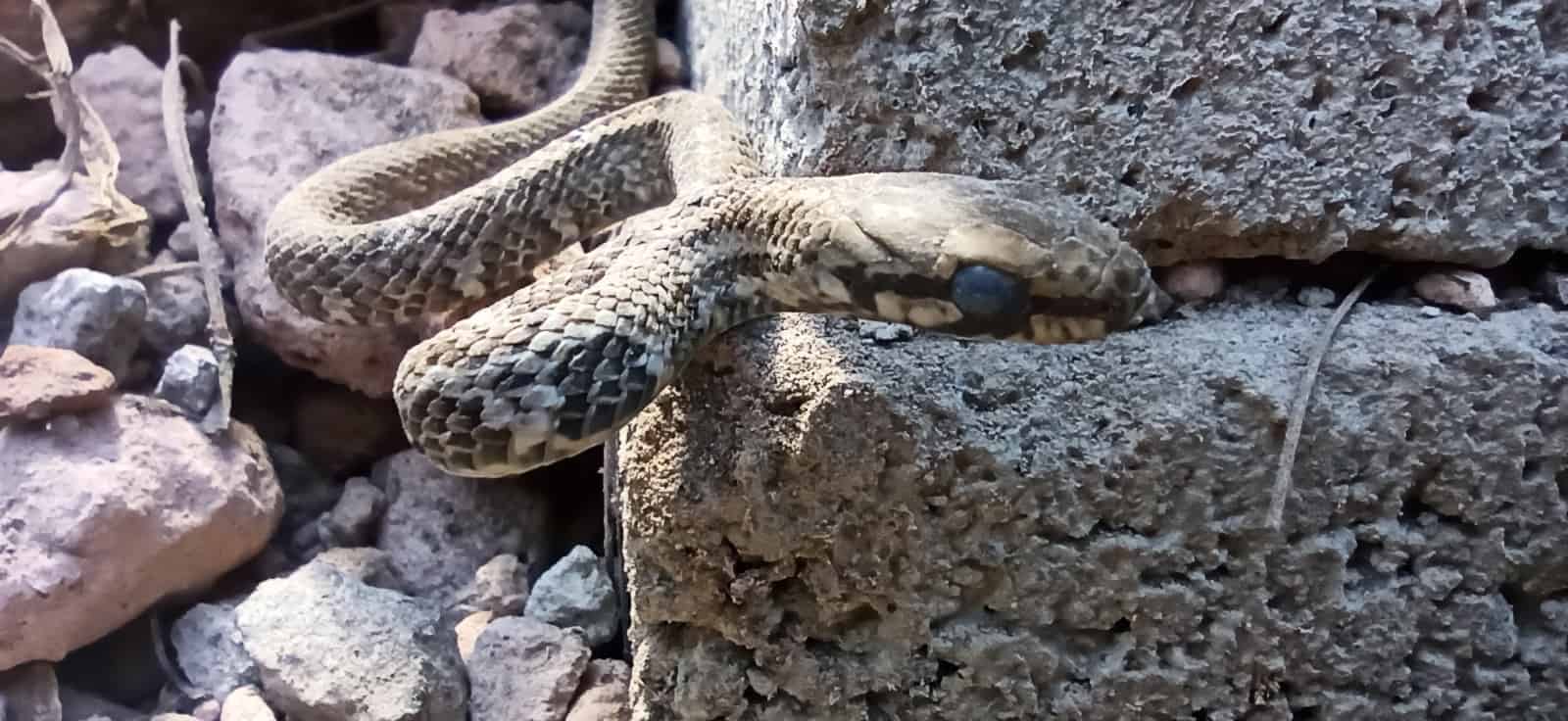
This little known snake lives tucked away in western Ecuador, amid a host of endemic snake species. They measure 150cm, and are either non-venomous or extremely mildly venomous. Cope’s tropical racer (Mastigodryas pulchriceps) is seen crossing roads at night, and inhabits grassland and forest alike, where they seem incapable of staying still.
Mastigodryas pulchriceps is constantly on the move, crossing thin branches, weaving through roots, and sneaking up behind lizards. Even when slithering, their tongues are always flecking, and you can practically sense of the gears of their brain spinning as they scan their environment for clues.
This is an active forager, which grabbles with prey, and uses all its determination to force them down. Cope’s tropical racer has an immense databank of colours and movements and corresponding forest creatures, which no human could possibly compete with. A thin object vanishing means a lizard’s tail, a brown dot means a toad, and familiar patterns could be a female. Cope’s tropical racer is born with this information, in an instant databank in its head, while a seasoned jungle veteran must learn through trial and error, and still doesn’t have accurate enough eyesight to distinguish the subtle signs.
| 2 | Southern brown egg eater |
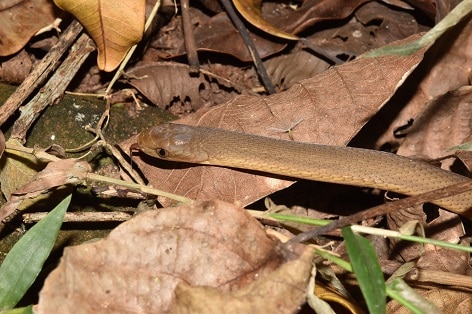
A harmless southern African snake measuring 75cm, which feeds mainly on eggs. Dasypeltis inornata can be found in thick vegetation bordering fields, woodlands and clumps of trees in villages. This species isn’t quick in the slightest, but they never stop investigating their surroundings. They progress along at a steady pace, as any leaf or log could harbour scents that lead them to their next egg bounty. Their sense of smell is immense; an intact egg doesn’t exactly smell, but southern brown eggs eaters can seek them out using these lingering particles alone.
Dasypeltis inornata is curious and inquisitive because it has to be. Eggs aren’t going to roll towards them, so they have to get searching and find the nooks and crannies where they’re stashed away.
This is a non-venomous species, which may bite if manhandled, but cannot cause serious damage. They survive by hiding in well vegetated areas, in a tangle of branches and overgrown roughage. This is their arena, a place of new opportunities daily, but potentially heavy defeats. Hungry birds are waiting, yet so are delicious eggs. If the southern brown egg eater sat back and relaxed, taking a day off, it would rapidly be outcompeted and defeated.
| 3 | Ecuador milk snake |
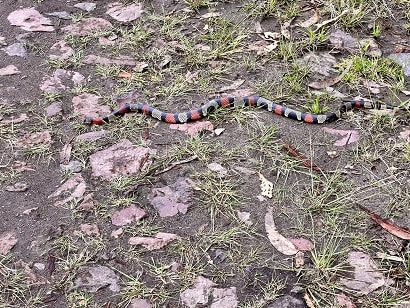
A relative of the US milk snakes, Lampropeltis micropholis is found from Ecuador to Panama, preferring cooler upland areas to stifling jungles. This is the most southerly kingsnake species, but has the same curious, inquisitive nature. They mainly eat mammals, which they constrict in tight coils after spending the day tracking them down. They’re always flecking their tongues, and once they’ve found a scent, Ecuadorian milk snakes will go whether that scent takes them.
This species has a particular tendency to invade farmsteads in its relentless pursuit of rodents. It doesn’t care if the door is locked; they can travel through holes barely bigger than a 50p piece. Ecuadorian milk snakes have no respect for human property, which you can’t blame them for, as they’d probably been prowling Panama’s hills for millions of years before humans showed up.
This species is poorly researched; most of what we know is from superficial observations. However, many of these feature Ecuadorian milk snakes roaming around green fields, searching all nooks and crannies for prey. They may invade mammal burrows in their curiosity quest, if they’re like their US kingsnake cousins.
| 4 | Small-spotted cat-eyed snake |
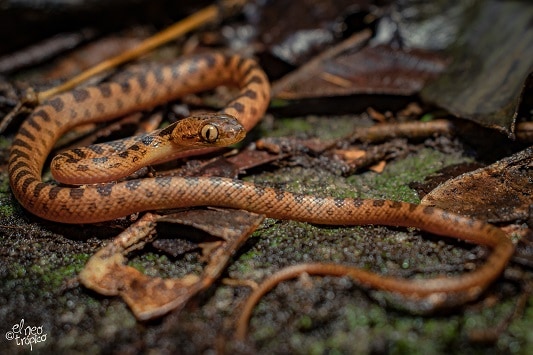
A 50m snake of Central American rainforests, inhabiting Nicaragua and El Salvador. This species belongs to the 15+ member Leptodeira family, and has a mild venom capable of swelling a finger up.
The small-spotted cat-eyed snake is an active hunter and never seems to grow tired of exploring its corner of the forest, whether for food or just for the sake of it (we can’t read their mind). It’s rare to see them doing nothing; they’ll most likely be exploring the forest floor or staring at you from a branch. This curiosity means that it’s life is a rollercoaster ride. A ringed tree boa can spend weeks clinging to the same branch, but for Leptodeira polysticta, no day is quite the same.
The evening begins with Leptodeira polysticta poking its head out of a tree trunk hollow. After 5 minutes, a frog scent particle lands on its tongue and is instantly decoded by its Jacobson’s organ. The small-spotted cat-eyed snake sets off, and passes by a bed of leaves. In their haste, they fail to notice the Central American coral snake leaping at them. Its fangs and neurotoxic venom miss them by millimetres. Half an hour later, the frog scents drag them up a tree. Finally, the small spotted cat-eyed snake locates the tree frog, but as the two wrestle, the intertwined pair plummet to the jungle floor and separate. It was a hard but ultimately fruitless day for the poor cat-eyed snake.
| 5 | South American sipo |
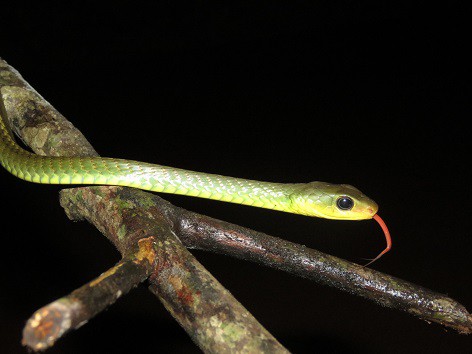
An Amazonian snake which reaches 136cm and lacks any form of venom. This species appears in villages, but mostly in humid, crawling rainforests. Most will go their entire lives without meeting a human being.
As a combatant in the Amazon arena, Chironius multiventris must be alert at all times. Failure to investigate a green, hopping object by a stream could result in losing a valuable meal, and losing just the tiniest bit of energy essential to survival. The South American sipo is an energetic species, which is constantly flecking its juicy red tongue. You can find them all over the Amazon, including in Brazil, Peru and Bolivia.
The only flaw to the South American sipo’s curiosity is that its camouflage becomes less effective. While a viper can rest on leaf beds, absorbing into the mulch with only its cunning eyes visible, South American sipos are always dashing around and exploring. They’re greenish, but they never get a chance to blend into anything. South Americans sipos are so eager to investigate every anomaly that they fail to notice the shadow of a snake eagle, or even the reptilian jaws of a caiman.
| 6 | Mozambique spitting cobra |
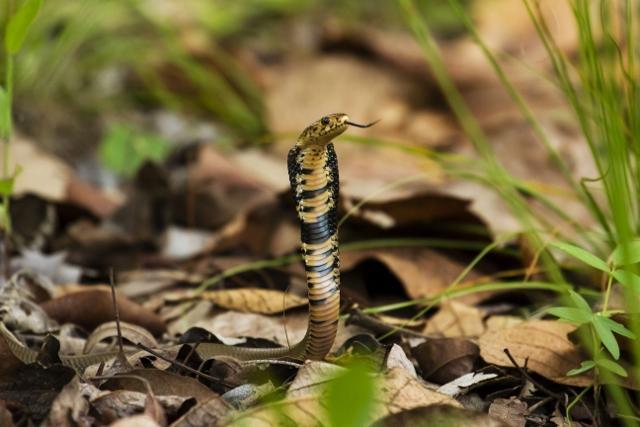
This species is curious and inquisitive to a dangerous extent. Mozambique spitting cobras inhabit southeast Africa and reach a record of 1.54 metres. They’re capable of swallowing black mambas (digesting them too), and their venom globules travel through the air at 10mph.
Unlike boomslangs, which rest sleepily on tree branches, Mozambique spitting cobras are interested in everything. They’re always investigating a new corner of the savannah, before their wanderings bring them to villages, where they slither up the street like a mysterous newcomer in town, flecking their tongue with interest at this strange new environment. This means that Mozambique spitting cobras are notorious for entering households. The exact reasons have never been determined, but they even enter through the plumbing, possibly for the sheer fun of it.
94% of Naja mossambica bites happen indoors, and 81% while the victim sleeps. Don’t count on tiptoing past a Mozambqiue spitting cobra. They’re fully aware of their environment, and people have been sprayed from bushes without realising that a snake was even there. Naja mossambica isn’t a tree snake, but they’ll climb them if their curiosity is piqued. Likewise for rivers; they’re far from semi-aquatic (like a garter snake), but will swim over a river with ease if scents from the opposite shore prove too intriguing to resist.
| 7 | Wall’s bronzeback |
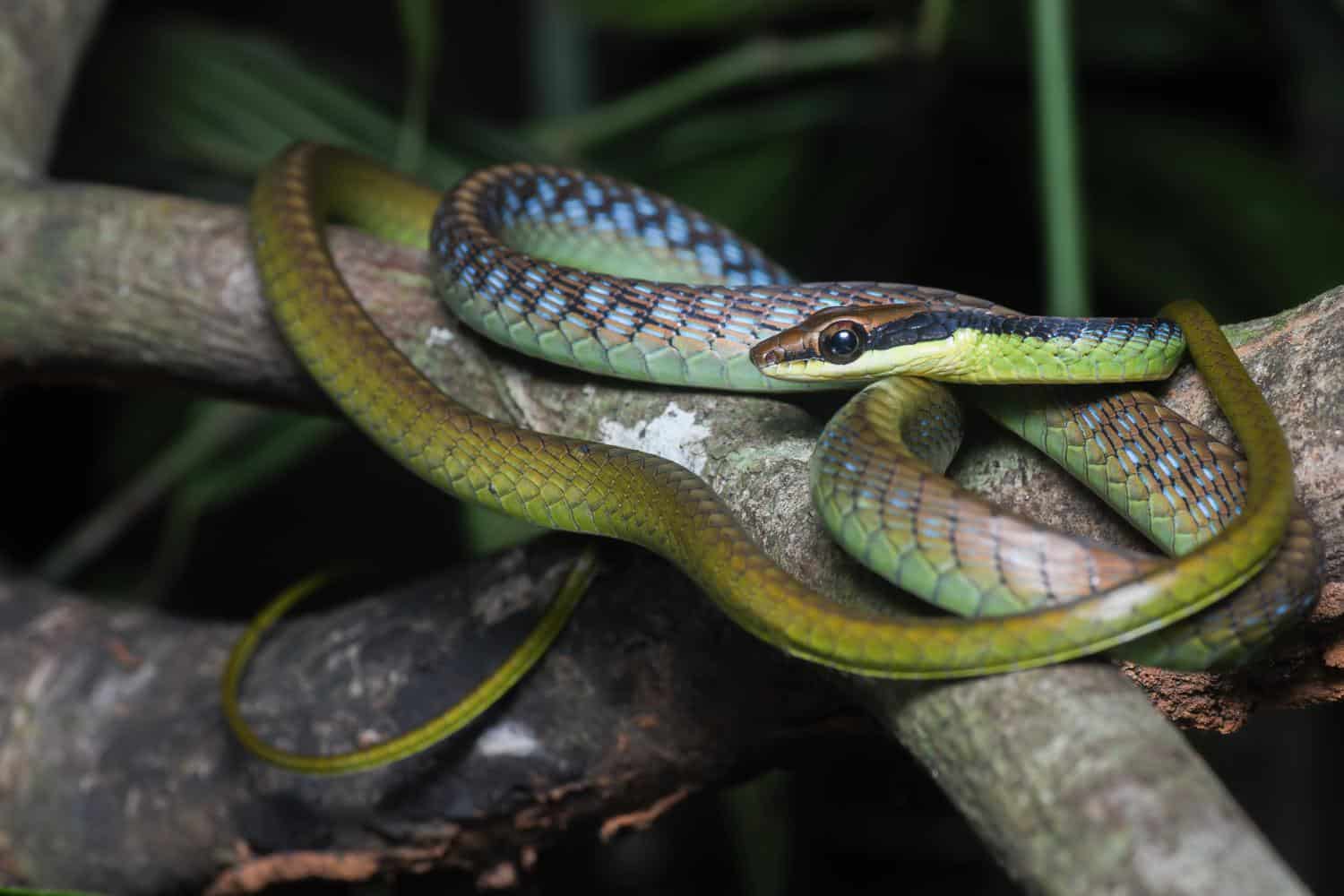
This 80-100cm species lives in western and southern Thailand, crossing the border with peninsular Malaysia. Wall’s bronzeback (Dendrelaphis cyanochloris) has a mild venom, but is no threat to humans. This is a thin-bodied snake with an abundance of energy, which is always scanning branches for frogs and lizards, its main prey. Wall’s bronzebacks live on branches in forests and the forest outskirts, a complex Thai ecosystem of infinite variables, where no day is ever quite the same.
Wall’s bronzebacks rarely use ambush strategies, and would be terrible if they tried. They’d last just a few minutes before they’d spot a strange shade of green by a distant pond, get excited, and dash off to find a juicy frog, instantly forgetting their previous plan. Dendrelaphis cyanochloris is equally curious when they meet humans. They may appear to be analysing you clearly for a moment, peering into your soul, before vanishing into the undergrowth at high speeds.
Wall’s broneback has much larger eyes than the average Thai bronzeback. These orbs pick up any flickers and inconsistencies in their familiar corner of the forest, which their inquisitive brain automatically analyses.
| 8 | Coin-marked snake |
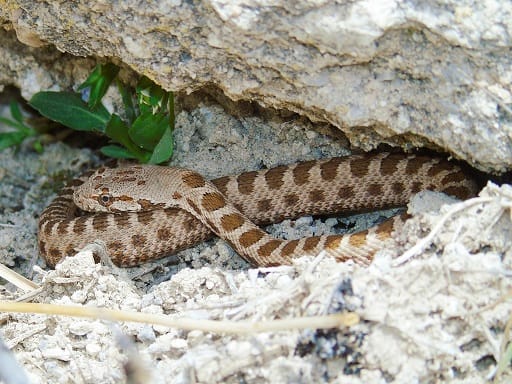
A part of the scenery in Israel. Coin-marked snakes range from Turkey to Syria to Lebanon, and belong to the same Hemorrhois family as Spain’s horseshoe whipsnake. They reach 100cm and lack even a mild venom. Their main scheme to stay alive is beige-brown shades that mimic the local Palestinian viper, aiming to inspire fear.
Coin-marked snakes are easy to find, as they spend hours each day prowling the Israeli countryside at a steady pace. Objects that catch their attention include dark burrows, sudden flickers of movement, and sudden spikes in scent particle readings.
Coin-marked snakes eat both mammals and lizards, and are found in dry scrubland, rocky outcrops and dry hillsides by roads. Israel of full of such parched, rocky areas. The opportunities are great for hawks to sweep down on a coin-marked snake, swallow them like spaghetti, and forget about them within 5 minutes of flying off. But coin-marked snakes also have beige tones to blend with dry environments. Coupled with their viper deterrence, they’ve decided that there’s no risk to slithering around Israel wherever they please, and following whatever scent trail interests them.
| 9 | Yellow-faced whipsnake |
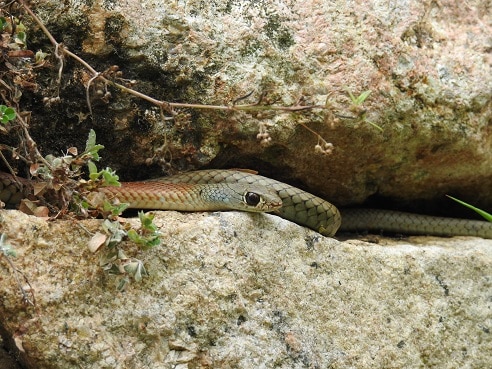
A common Australian species with a mild venom targeted towards lizards. Yellow-faced whipsnakes average at 80cm, and inhabit most of Australia’s populous eastern coast. This species is the opposite of the carpet python with which they overlap. Thick, powerfully muscled and lazy becomes thin, nimble, and curious. This species is always flecking its tongue and suddenly rotating its head at the slightest interesting sight. This could be a lizard tail disappearing, or even a blade of glass swaying unusually.
Their favourite activities include threading along a brick wall, watching humans with a confident expression on their face, and forming mysterious communal gatherings. Yellow-faced whipsnakes will undoubtedly notice you if you walk past, but lack even unusually sharp fangs.
Their diet mainly consists of small lizards such as skinks, and this is the origin of their inquisitive, curious nature. Skinks are very fast, and require sharpened instincts to locate and grab. They pursue lizards and grapple them manually with a single loose coil, and these anoles are also well camouflaged, forcing the yellow-faced whipsnake to become sharper over time. This snake is particularly common in the cities of Sydney and Brisbane.
| 10 | Striped skaapsteker |
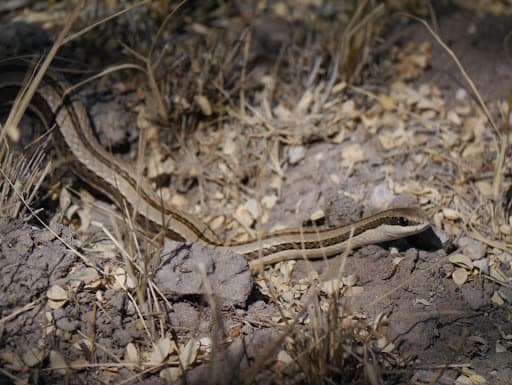
The striped skaapsteker (Psammophylax tritaeniatus) lives in open savannahs of Africa, sometimes woodlands, and occasionally villages. They have an enormous playground to explore, something that tourists pay 100s of dollars to visit, which the snake gets for free. It’s also true that tourists have the safety of a jeep and a trained guide wielding a rifle, while Psammophylax tritaeniatus could be eaten at any second.
Either way, this is a harmless, fast-moving snake which reaches 65cm and preys on a mixture of tiny mammals and lizards. They’re a curious, inquisitive snake rather than a lazy ambusher which waits around and hopes that prey comes to them. Don’t be surprised to see the striped skaapsteker’s head poking into a dark mammal burrow, or slithering through a hollow log core on the random chance that something is inside.
The striped skaapsteker belongs to the 6 member skaapsteker (Psammophylax) family, which all live in Africa and all have a similarly curious personality. This species lives in Zimbabwe, Mozambique and northeast South Africa, and sticks to the ground rather than climbing trees.
